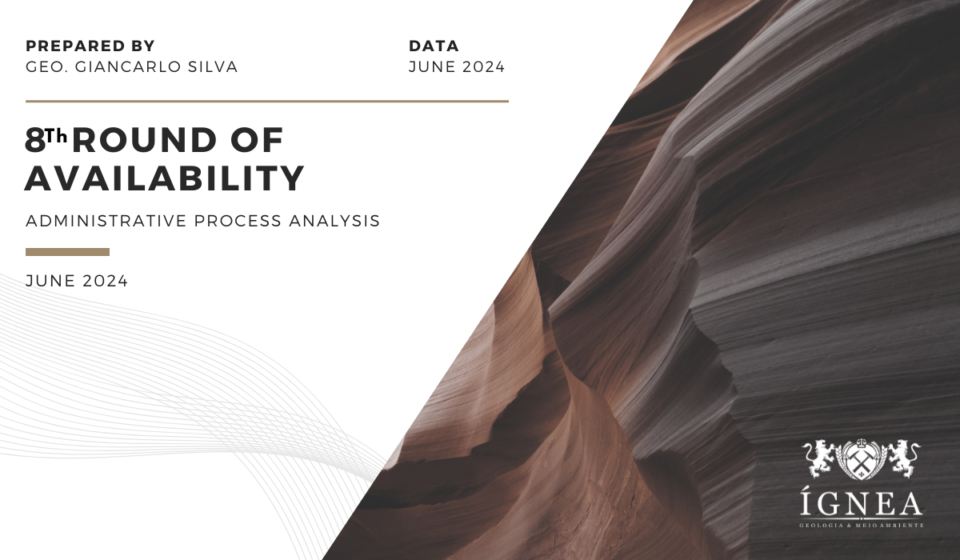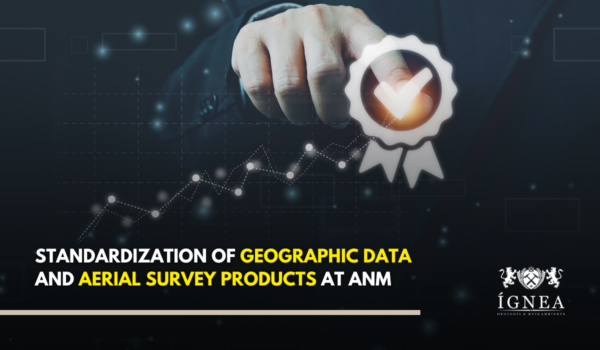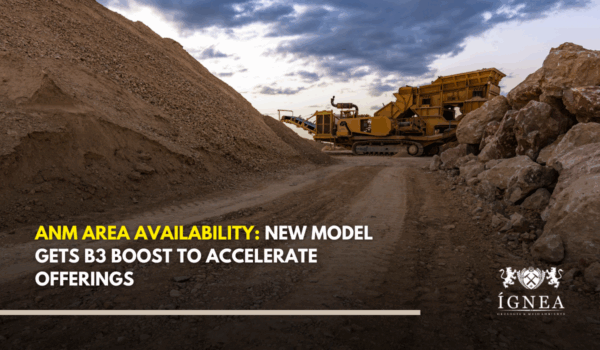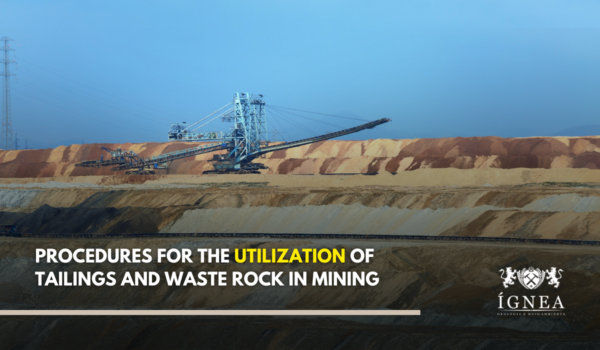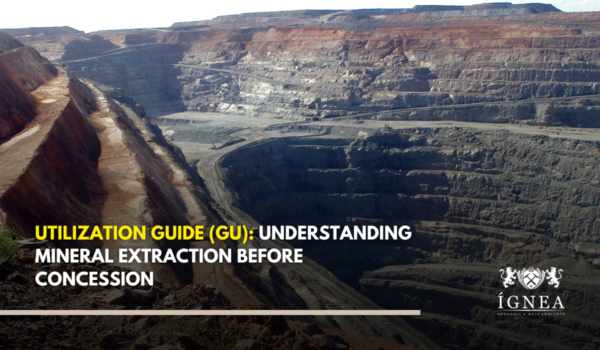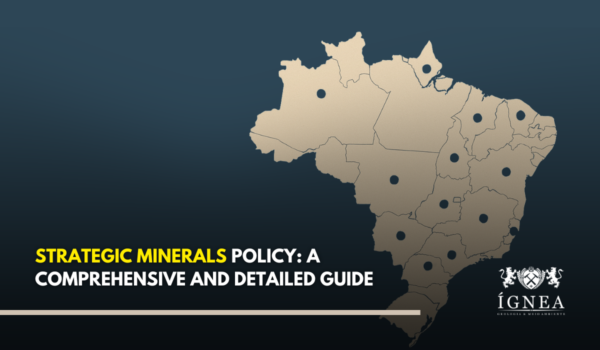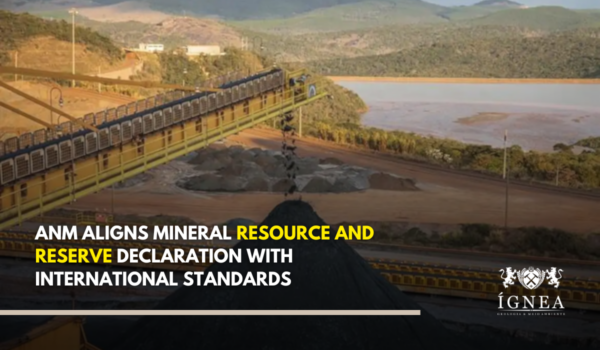By Giancarlo Silva
In light of the recent publication of Notice No. 01/2024, which marks the beginning of the 8th Round of Area Availability, we conducted a detailed and administrative analysis of regions with significant potential for Strategic Minerals in Brazil.
Our study considered the locational component, where we filtered mining processes with already calculated resources or reserves within a radius of up to 5km from the polygons defined in the 8th Round.
In this article, we will present a comprehensive overview of the administrative procedures and guidelines involved, as well as a detailed analysis of the 5,000 areas made available by ANM in the 8th Round. Enjoy your reading.
8th Round of ANM Area Availability
The notice was divided into two distinct stages: Public Offer and Electronic Auction.
The Public Offer corresponds to the first stage of the Area Availability Procedure, during which Participants must express their interest in the Area(s), aiming to assess the attractiveness potential of each one, according to Article 46 of Decree No. 9,406 of 2018.
The Electronic Auction corresponds to the second stage of the Area Availability Procedure, applicable only to those Areas that received more than one expression of interest during the Public Offer stage.
PROCEDURES AND RULES
Limit on Expressions of Interest: Each Participant may express interest in a maximum of 10% (ten percent) of the areas included in the process.
Areas with No Expressions of Interest: Areas with no expressions of interest will be considered free from the first business day following the closing date of the Public Offer, with no need for an Electronic Auction for such areas.
Areas with a Single Expression of Interest: Areas with only one expression of interest will not be subject to an electronic auction, and the interested participant will be notified to submit their application for a mining title according to the dates and rules set out in Notice No. 01/2024.
Areas with More Than One Expression of Interest: If there is more than one expression of interest for a particular area, it will be submitted to an electronic auction, in which only the participants who expressed interest in the respective area during the public offer stage will participate.
The notice for the 8th Round of ANM Area Availability begins on May 17, 2024, and ends on November 25, 2024.
CALENDAR
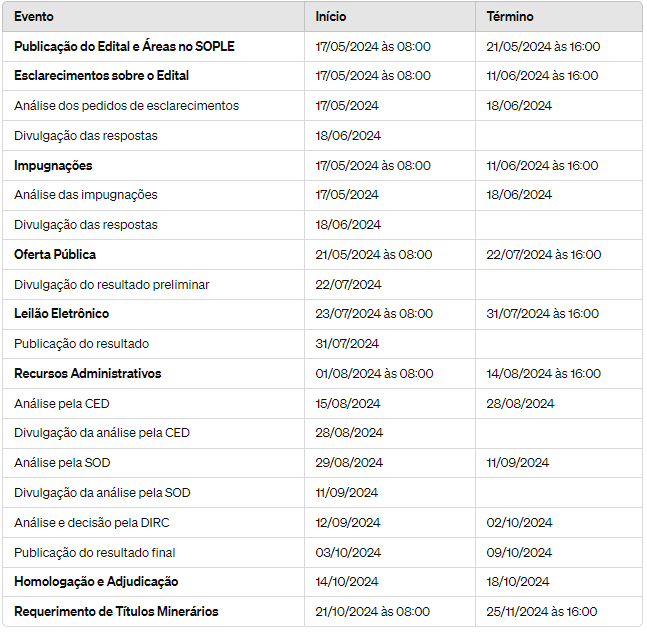
OVERVIEW – NOTICE No. 01/2024
The National Mining Agency (ANM) has made various areas available for mineral exploration across different Brazilian states. Minas Gerais leads with 687 areas, followed by Goiás with 564 and Rio Grande do Sul with 459. Other states with a significant number of areas include Bahia, Mato Grosso, and Paraná.
The data indicates a total of 4,400 research areas compared to 600 mining areas. This distribution reflects ANM’s strategy to encourage exploration and the development of new mineral resources, promoting a solid foundation for the future of mining in Brazil.
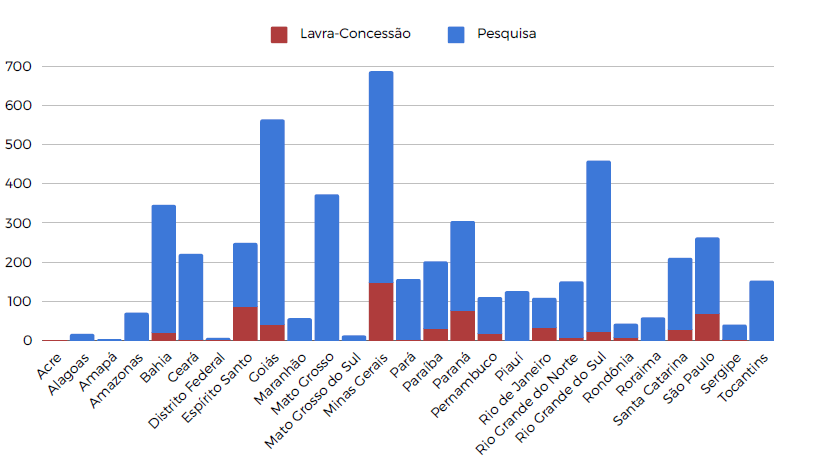
EVENT ANALYSIS
The administrative study of the areas in the 8th round of availability focused on processes that were originally under the authorization/concession regimes.
The objective was to determine a possible evolution of geological-mineral knowledge/potential based on the data requested or submitted to ANM. Therefore, it is essential to succinctly understand the procedure to which these processes were subjected.
The following flowchart objectively describes the complete procedure of mining processes under the authorization/concession regimes.
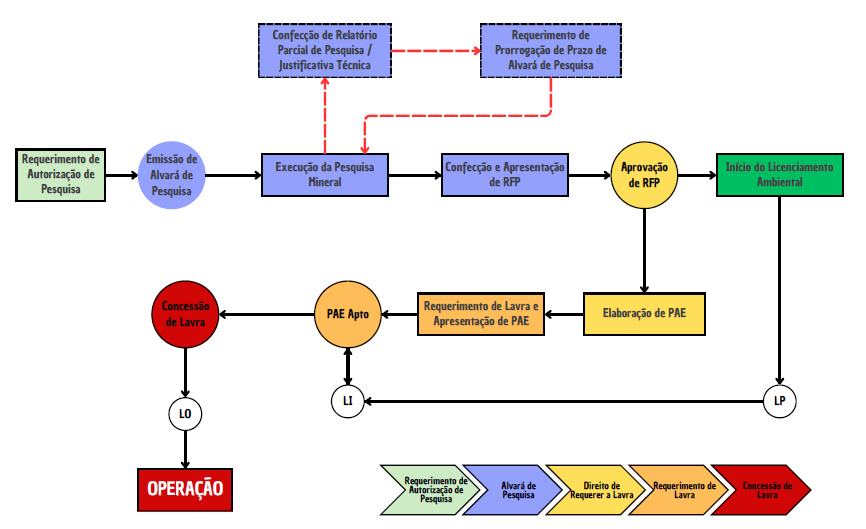
EVENT ANALYSIS
Eleven distinct stages were identified in the flow of the administrative process, each with specific characteristics that can indicate geological knowledge and the interest of the previous holder. Below, we present each of the identified stages.
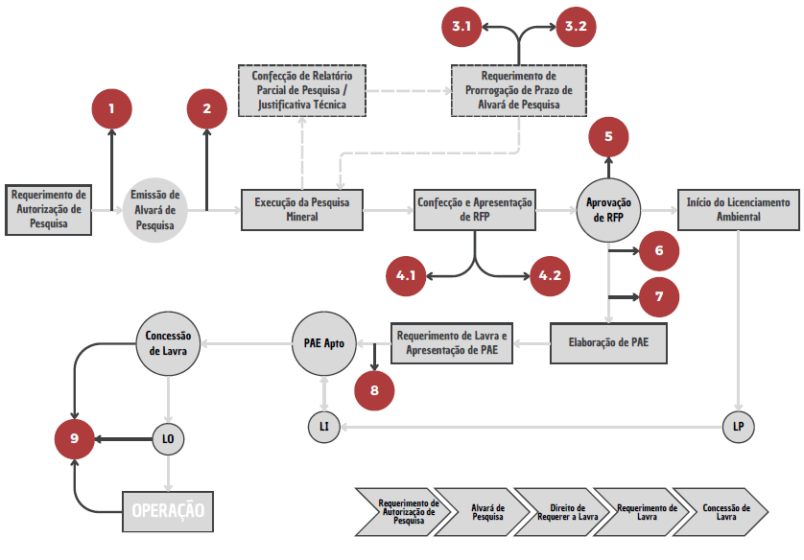
1. Withdrawal of Research Application: This event represents processes that did not obtain a research permit and were abandoned by their applicants before starting mineral exploration.
2. Renunciation of Mineral Research Permit: These are areas that received a research permit but were abandoned by their holders before the submission of the research report.
3.1 Denial of Research Permit Extension Request: Areas that underwent a first and/or second cycle of research authorization validity were subject to an extension request for a new research cycle, but the request was denied by ANM.
3.2 Withdrawal of Research Permit Extension Request: Areas that underwent a first and/or second cycle of research authorization validity were subject to an extension request for a new research cycle, but the holder withdrew the request.
4.1 Negative Final Research Report: These are areas where mineral research was conducted by the holder but, according to them, do not present mineral potential.
4.2 Positive Final Research Report: These are areas where mineral research was conducted by the holder and submitted to ANM for approval.
5. Area Discarded During Mineral Research: These are parts of areas that were discarded by the holder when presenting the positive final research report.
6. Waiver of the Right to Apply for Mining: These are areas with an approved final research report, therefore proven resources, but without a feasibility study and not subject to a mining application.
7. Forfeiture of the Right to Apply for Mining: These areas had an approved research report, thus having proven resources, but the holder lost the right to apply for mining. These areas lack a feasibility study.
8. Withdrawal of Mining Application: These are areas with an approved final research report, therefore proven resources, were subject to a feasibility study, a mining application, but the interested party abandoned the project.
9. Renunciation of Mining Concession: These are areas that completed the administrative cycle, have proven resources and reserves, may have been subject to mining, but the holder abandoned the enterprise.
CONCLUSION
5,000 mining processes were analyzed, from which it was possible to extract administrative information on research or mining for 2,939. In this universe, it was possible to analyze 3,992 administrative acts, of which 2,768 are distributed among withdrawals, area discards, renunciations, and negative mineral research reports.

The study showed that 522 areas never progressed beyond the research authorization application phase, 717 areas were renounced by their holders, 792 areas had negative research reports submitted, and 630 areas were discarded during research studies.
At the same time, it was observed that 730 areas had positive final research reports submitted and 22 mining concessions were renounced.

